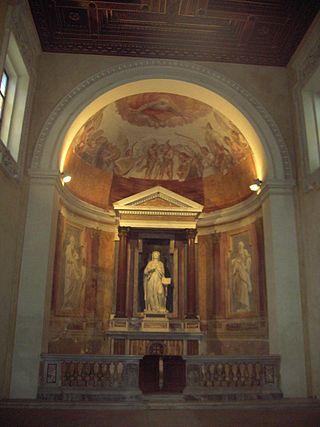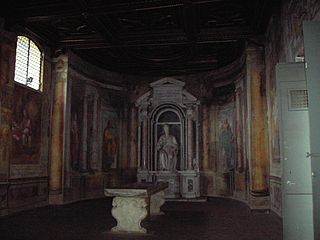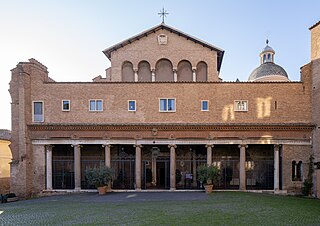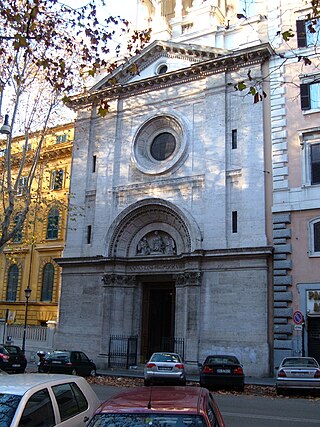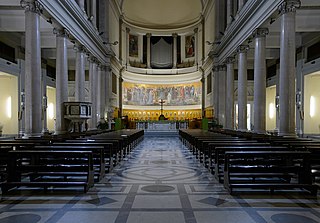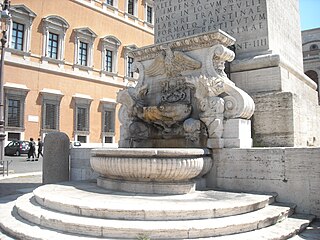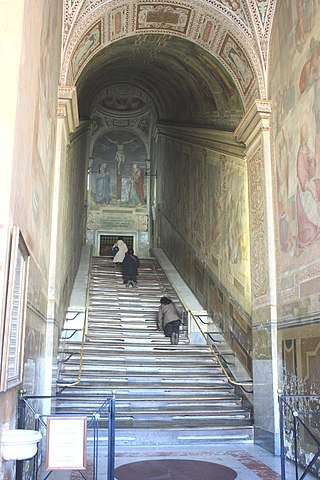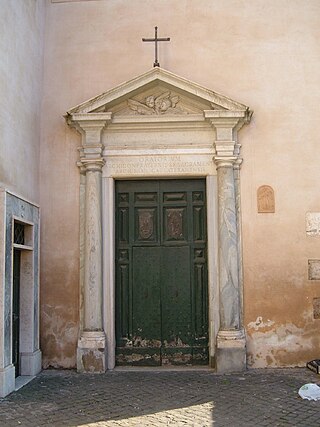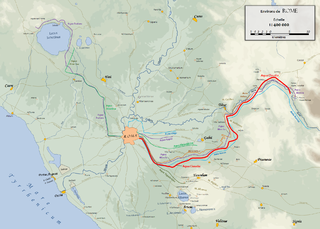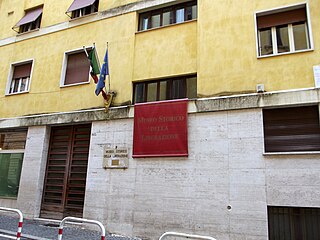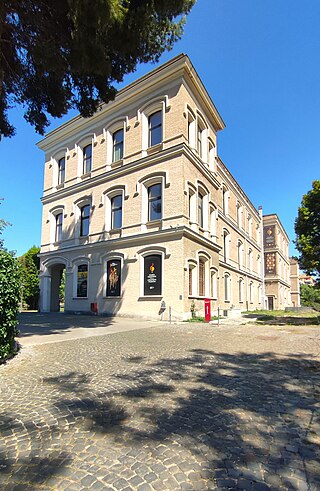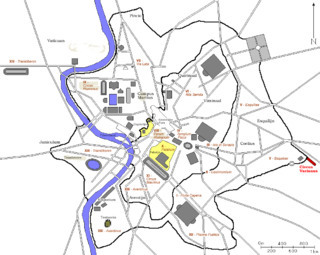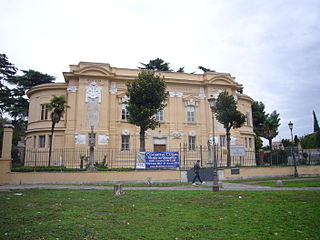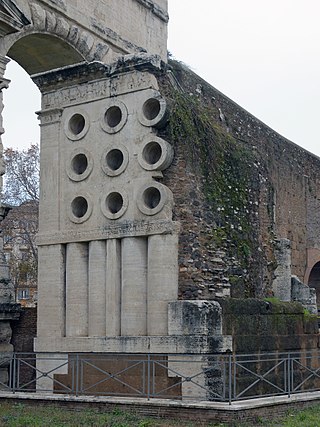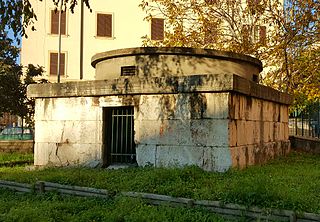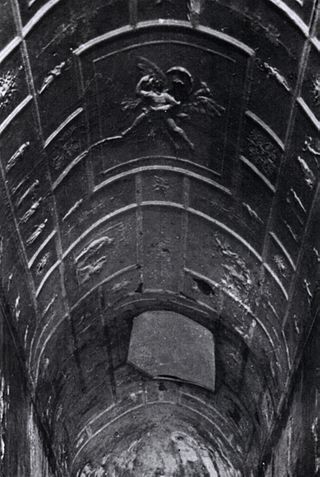Self-guided Sightseeing Tour #12 in Rome, Italy
Legend
Guided Free Walking Tours
Book free guided walking tours in Rome.
Guided Sightseeing Tours
Book guided sightseeing tours and activities in Rome.
Tour Facts
6.7 km
133 m
Experience Rome in Italy in a whole new way with our free self-guided sightseeing tour. This site not only offers you practical information and insider tips, but also a rich variety of activities and sights you shouldn't miss. Whether you love art and culture, want to explore historical sites or simply want to experience the vibrant atmosphere of a lively city - you'll find everything you need for your personal adventure here.
Activities in RomeIndividual Sights in RomeSight 1: Oratorio di Santa Silvia
The Oratory of Santa Silvia is a church in Rome, in the Celio district, in Piazza di San Gregorio: it is one of the three oratories of the Celio, near the church of San Gregorio.
Sight 2: Oratorio di Sant'Andrea
The Oratory of Sant'Andrea is a church in Rome, in the Celio district, in Piazza di San Gregorio: it is one of the three oratories of the Celio, near the church of San Gregorio.
Sight 3: Oratorio di Santa Barbara
The Oratory of Santa Barbara is a church in Rome, in the Celio district, in Piazza di San Gregorio: it is the oldest of the three oratories of the Celio, near the church of San Gregorio.
Sight 4: Basilica dei Santi Giovanni e Paolo
The Basilica of Saints John and Paul on the Caelian Hill is an ancient basilica church in Rome, located on the Caelian Hill. It was originally built in 398.
Sight 5: Fontana Celimontana
The Celimontana fountain, also known as the fountain of Pius IX, is located in Rome, in Via Annia, leaning against the enclosure wall of a service structure of the Celio Military Hospital.
Sight 6: Tempio di Iside a via Labicana
The Temple of Isis in Via Labicana, in Rome, was a vast sanctuary dedicated to Isis and Serapis, located on the slopes of the Oppian Hill, in the region that had taken its name from the temple. Of this, near today's Via Labicana, only a massive bare wall remains visible between Via Labicana and Via Merulana.
Sight 7: Chiesa di Sant'Anna al Laterano
The church of Sant'Anna al Laterano is a Catholic place of worship in Rome, in the Monti district, in Via Merulana.
Sight 8: Basilica di Sant'Antonio da Padova all'Esquilino
The Basilica of Saint Anthony of Padua al Laterano is a Roman Catholic titular church in Rome on Via Merulana, one block from the Obelisk of St. John Lateran. It was built for the Order of Friars Minor, who needed a new home after they were moved from Santa Maria in Ara Coeli to allow the construction of the Victor Emmanuel II Monument.
Sight 9: Battistero Lateranense

The Lateran Baptistery stands apart from the Archbasilica of Saint John Lateran, Rome, to which it has become joined by later construction. This baptistery was founded by Pope Sixtus III in 440, perhaps on an earlier structure, for a legend grew up that Constantine the Great had been baptized there and enriched the structure. However, it is more likely that if he was baptized it was in the Eastern part of the Roman Empire and possibly by an Arian bishop. This baptistry was for many generations the only baptistery in Rome, and its domed octagonal structure, centered upon the large octagonal basin for full immersions, provided a model for others throughout Italy, and even an iconic motif of illuminated manuscripts, "The fountain of Life".
Sight 10: Fontana dell'obelisco Lateranense
The fountain of the Lateran obelisk is located in Rome, in Piazza San Giovanni in Laterano, leaning against the northern side of the obelisk.
Sight 11: Obelisco Lateranense
The Lateran Obelisk is the largest standing ancient Egyptian obelisk in the world, and it is also the tallest obelisk in Italy. It originally weighed 413 tonnes, but after collapsing and being re-erected 4 metres (13 ft) shorter, now weighs around 300 tonnes. It is located in Rome, in the square across from the Archbasilica of St. John Lateran and the San Giovanni Addolorata Hospital.
Sight 12: Scala Santa
The Scala Sancta are a set of 28 white marble steps located in an edifice on extraterritorial property of the Holy See in Rome, Italy proximate to the Archbasilica of Saint John in Laterano. Officially, the edifice is titled the Pontifical Sanctuary of the Holy Stairs, and incorporates part of the old Papal Lateran Palace. Replica stairs flank the original staircase, which may only be climbed on one's knees. The Holy Stairs lead to the Church of Saint Lawrence in Palatio ad Sancta Sanctorum or simply the "Sancta Sanctorum", which was the personal chapel of the early Popes.
Sight 13: Oratorio dell'Arciconfraternita del Santissimo Sacramento
The Oratory of the Blessed Sacrament at the Lateran is a church in Rome, in the Monti district, in Piazza di San Giovanni in Laterano, next to the Holy Stairs.
Wikipedia: Oratorio del Santissimo Sacramento al Laterano (IT)
Sight 14: Aqua Neroniana
Aqua Claudia was an ancient Roman aqueduct that, like the Aqua Anio Novus, was begun by Emperor Caligula in 38 AD and finished by Emperor Claudius in 52 AD.
Sight 15: Museo Storico della Liberazione
The Museum of the Liberation of Rome is located in an apartment building at Via Tasso 145, Rome, close to the basilica of St. John Lateran. It records the period of German occupation of Rome in the Second World War and its subsequent liberation. The building housing the museum was used by the SS to torture members of the Italian Resistance in the first half of 1944.
Sight 16: Chiesa di Santa Maria Immacolata all'Esquilino
Santa Maria Immacolata all'Esquilino is a 20th-century parochial church and titular church on the Esquiline Hill in Rome, dedicated to Mary Immaculate.
Sight 17: Sepolcri repubblicani di Via Statilia
Republican tombs on the Via Statilia are several Roman tombs located at the intersection of the Via Statilia and the Via di Santa Croce in Gerusalemme, in the Esquiline rione of Rome.
Sight 18: Palazzo Sessoriano
The Palazzo Sessoriano was an imperial residential complex built by Septimius Severus and completed by Elagabalus within the Horti Variani, located at the southeastern end of Rome's Regio V Esquiliae near the Claudian Aqueduct.
Sight 19: Museo Nazionale degli Strumenti Musicali
The National Museum of Musical Instruments is situated in the Palazzina Samoggia in Rome. The museum, owned by the MIBACT since December 2014 is one of 43 museums pertaining to the Polo museale del Lazio. The museum had 9,164 visitors in 2015.
Sight 20: Carceres del Circo Variano
Circus Varianus was a large Roman circus, started during the reign of Caracalla and located in the palatial villa complex known as the Horti Spei Veteris, which included the Amphitheatrum Castrense. This circus was where Elagabalus raced chariots under the family name of Varius, giving the site its name. The circus was later restructured by Elagabalus, who removed the western end to create more space for the palace by moving the starting gates (carcares) back and building two towers at the end.
Sight 21: Museo storico dei granatieri di Sardegna
The Historical Museum of the Grenadiers of Sardinia is located in Piazza Santa Croce in Gerusalemme 7 in Rome.
Sight 22: Sepolcro del fornaio Eurisace
The tomb of Marcus Vergilius Eurysaces the baker is one of the largest and best-preserved freedman funerary monuments in Rome. Its sculpted frieze is a classic example of the "plebeian style" in Roman sculpture. Eurysaces built the tomb for himself and perhaps also his wife Atistia around the end of the Republic. Located in a prominent position just outside today's Porta Maggiore, the tomb was transformed by its incorporation into the Aurelian Wall; a tower subsequently erected by Honorius covered the tomb, the remains of which were exposed upon its removal by Gregory XVI in 1838. What is particularly significant about this extravagant tomb is that it was built by a freedman, a former slave.
Sight 23: Acquedotto Felice
The Acqua Felice is one of the aqueducts of Rome, completed in 1586 by Pope Sixtus V, whose birth name, which he never fully abandoned, was Felice Peretti. The first new aqueduct of early modern Rome, its source is at the springs at Pantano Borghese, off Via Casilina. Its length is fifteen miles (24 km), running underground for eight miles (13 km) from its source, first in the channel of Aqua Alexandrina, then alternating on the arches of the Aqua Claudia and the Aqua Marcia for seven miles (11 km) to its terminus at the Fontana dell'Acqua Felice on the Quirinal Hill, standing to one side of the Strada Pia, so as to form a piazza in this still new part of Rome. The engineer was Giovanni Fontana, brother of Sixtus' engineer-architect Domenico Fontana, who recorded that the very day the new pope entered the Lateran, he decided that he would bring water once again to the hills of Rome, which had remained waterless and sparsely inhabited, largely by monasteries, since the original ancient aqueducts had been destroyed in the sixth century. From the source, which Sixtus purchased, there was only a very small fall, and the work required an underground conduit as well as an aqueduct carried on arches.
Sight 24: Sepolcro di Largo Talamo
The Sepulchre of Largo Talamo is located in Largo Eduardo Talamo in the San Lorenzo area of Rome.
Sight 25: Basilica Sotterranea di Porta Maggiore
The Porta Maggiore Basilica is an underground basilica discovered in 1917 near Porta Maggiore in Rome. It is dated to the first century BC. It is believed to have been the meeting place of the neo-Pythagoreans, and is the only historical site that has been associated with the neo-Pythagorean movement. This school of mystical Hellenistic philosophy preached asceticism and was based on the works of Pythagoras and Plato. It was a precursor to the basilicas built during the Christian period, centuries later. It was opened to small groups of visitors in April 2015.
Share
How likely are you to recommend us?
Disclaimer Please be aware of your surroundings and do not enter private property. We are not liable for any damages that occur during the tours.
GPX-Download For navigation apps and GPS devices you can download the tour as a GPX file.
